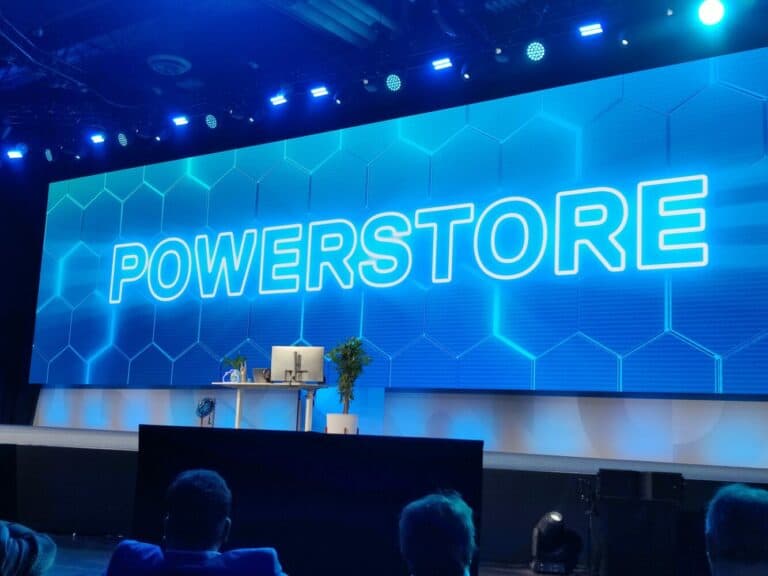Dell Technologies is introducing more than 500 enhancements to its storage portfolio. The organization is also working on project Alpine, with which it wants to bring various storage platforms to the cloud. It will soon be possible to spin up a Dell PowerScale, PowerFlex, PowerStore, PowerProtect or ObjectScale in the cloud.
Dell Technologies has a huge storage portfolio. Most large organizations run Dell storage servers. In recent years, Dell improved its portfolio with speed, intelligence and innovation. Storage has now become software-defined. This means that Dell can make improvements more easily. The organization is presenting no less than 500 software improvements, distributed across Dell’s various storage platforms. The solutions become smarter and faster.
One advantage of software-defined storage is that Dell can take the step to the cloud. Within a year, Dell’s complete storage portfolio should be available at various hyperscalers. From that point onwards, you’ll simply be able to spin up a PowerMax or PowerStore in AWS, among others. Dell says it is gradually bringing all storage platforms to the cloud in the coming quarters. There are indications of all storage platforms becoming available in at least one cloud within a year, possibly even more.
Tip: Dell Technologies extends APEX services with Cyber Recovery from the cloud
Dell PowerStore gets best enhancements
Looking at the improvements to Dell PowerStore, this platform may benefit the most. According to Dell, PowerStore is the fastest-growing storage architecture in Dell (and EMC) history. Hence, Dell has a major focus on PowerStore. This now results in a 50 percent improvement of workload performance and up to 66 percent more capacity. Customers can also more easily guarantee business continuity. It’s possible to configure high-availability replication with just five clicks.
Other enhancements include secure file workloads with file-level retention, native file replication, support for third-party file monitoring and protection against ransomware. VMware integration was improved with vVols (virtual volumes) latency and performance, as well as simplified disaster recovery.
Tip: Dell EMC PowerStore: new intelligent storage system for all data
Dell PowerMax for mission critical storage
Furthermore, Dell PowerMax gets new possibilities such as cyber vaults for traditional and mainframe deployments. In addition, CloudIQ gains better ransomware detection capabilities, so that cyberattacks can be intercepted early and data can be restored quickly. In total, PowerMax can create 65 million secure snapshots, more than any storage array in the world. In addition, efficiency is increased with the new 4:1 data reduction guarantee.
PowerMax’s productivity has also been improved thanks to automated storage tasks. These include smart provisioning, workload optimisation, health monitoring and automatic recovery.
It’s also possible to quickly move data to the public cloud through cloud snapshots and recovery. High availability is included to minimize downtime and restore data to object storage.
Dell is also introducing two new NVMe-based PowerMax models. This allows customers to achieve twice the performance of demanding applications and mainframes.
Dell PowerFlex brings traditional and modern workloads together on a single platform
Dell PowerFlex brings unified block and file storage together on the same platform. PowerFlex simplifies multi-cloud storage. It also increases DevOps capabilities by supporting all major Kubernetes and container orchestration platforms. This includes support for Amazon Web Services, Microsoft Azure, Google Cloud Platform, Red Hat OpenShift, SUSE Rancher and VMware Tanzu.
For customers, Dell PowerFlex results in a lower TCO by co-locating traditional and container workloads on the same platform. The platform runs on both bare metal and virtual servers. PowerFlex deployment is easier thanks to NVMe-over-TCP, which allows a consistent connection for storage.
Tip: Dell unveils major performance update to its PowerFlex HCI
